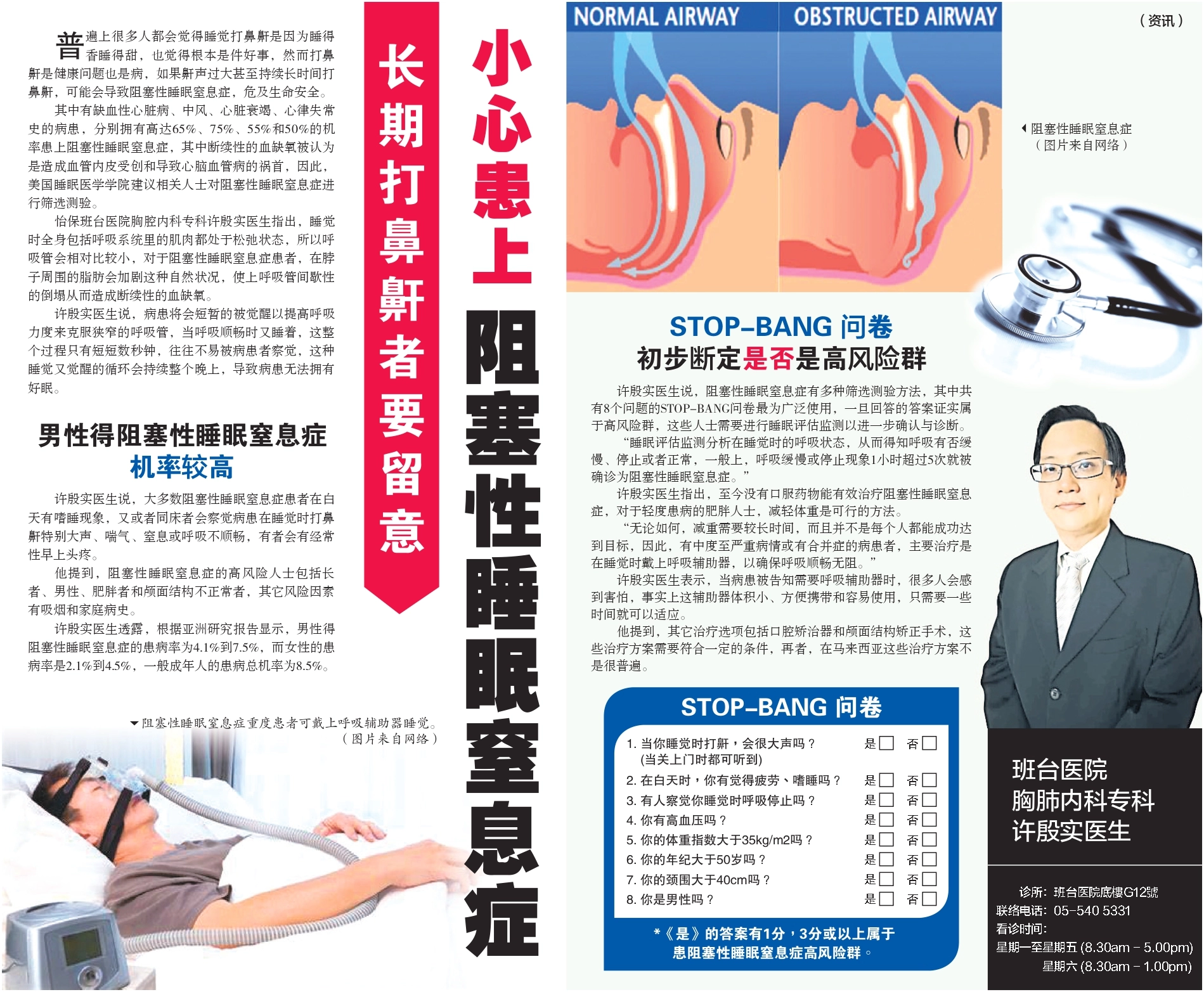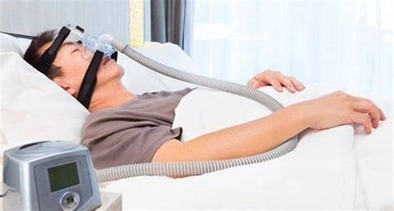
People who experienced long term snoring should pay attention

Many people think that snoring is a normal process when they are in deep sleep which indicating you have a good sleep. However, snoring is a health problem and a disease. If the snoring is too loud or lasts for a long time, it may Lead to Obstructive Sleep Apnea and it is life-threatening.
The reported prevalence rates of Obstructive Sleep Apnea in patients with ischemic heart disease, stroke, heart failure and arrhythmia are as high as 65%,75%, 55% and 50% respectively. It is believed that intermittent hypoxaemia causes endothelial injury and the culprit for cardiovascular events. Therefore, American Academy of Sleep Medicine has recommended that this group of people should be screened for Obstructive Sleep Apnea.
Consultant Chest Physician Pantai Hospital Ipoh Dr Khor Inn Shih Stated that “During sleep, airways are relatively smaller since all body muscles including in the respiratory system tend to relax. This natural condition is aggravated by the surrounding fat at the neck in Obstructive Sleep Apnea. Obstructive Sleep Apnea causes intermittent collapse of upper airways (Fig 1) resulting in intermittent hypoxaemia.”
Dr Khor Inn Shih said patients will be awakened as the effort to breath is increased to overcome the narrow airways and sleep again when resuming normal breathing. Most patients will not aware of the whole process since it happens in a few seconds. The wake-sleep cycle is repetitive whole night and thus it disturbs good sleep.
Dr Khor Inn Shih shared that most patients with Obstructive Sleep Apnea complain of daytime sleepiness, or their bed partner reports loud snoring, gasping, choking or interruptions in breathing while sleeping. Some have frequent morning headaches.
Dr Khor mentioned several risk factors are associated with OSA and include older age, male sex, obesity and craniofacial anomalies. Other less well established risk factors include smoking and family history of OSA.
Dr Khor Inn Shih state that A few studies in Asia have reported OSA prevalence ranging from 4.1% to 7.5% in men and from 2.1 to 4.5% in women with an overall prevalence of 8.5% in the general adult population.
[STOP-BANG Questionnaire]
There are 8 questions for this questionnaire and each “Yes” answer will be allocated 1 point. A score of 3 or more is considered high risk of Obstructive Sleep Apnea.
There are a few ways for screening but the most widely used is STOP-BANG questionnaire. A score of 3 or more is considered high risk of Obstructive Sleep Apnea. A further diagnostic test with a sleep study is warranted.
The sleep study analyzes the breathing patterns during sleep, whether the breathing is normal,slow down (hypopnoea) or stop totally (apnoea). In general, any hypopnoea or apnoea events more than 5 per hour is considered having Obstructive Sleep Apnea. As shared by Dr Khor, there is no effective oral medication for Obstructive Sleep Apnea. For obese patients with wild diseases, weight reduction might be sufficient.
But we should know that the process to reduce body weight to the desired value is slow and not everybody can achieve the target. Therefore, for those with moderate to severe disease or those with multiple co-morbidities, the main treatment will be using a breathing device (Fig2) for maintaining the patency of the airways during sleep.
Dr Khor said many patients are terrified when they are told to use the breathing device. In reality, the size of the device is small. It is portable, easy to use and just needs to take time to get accustomed to it.
Dr Khor mentioned other treatment options include oral appliance and surgical correction for craniofacial anomalies。 Certain criteria need to be fulfilled for these treatment options and they are not widely available in Malaysia.

Figure 2 Patients with severe Obstructive Sleep Apnea may wear a breathing aid to sleep.
This article was contributed by Dr. Khor Inn Shih, Chest Physician at Pantai Hospital Ipoh. To know more about where and when to see Dr. Khor Inn Shih at his clinic, click here.

